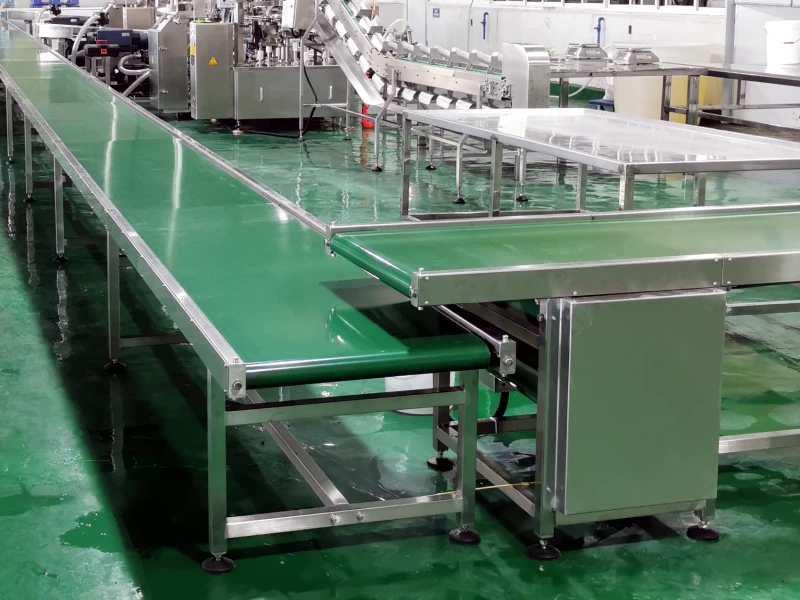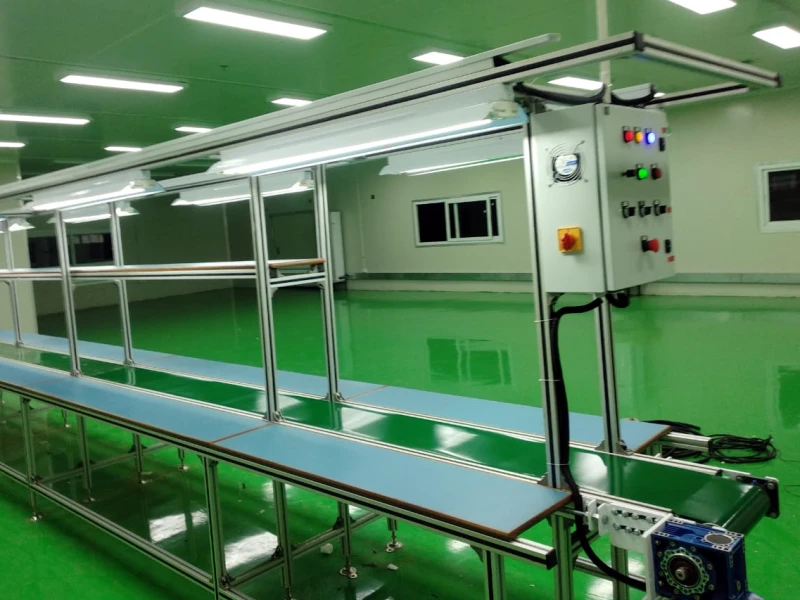
Design of Conveyor Intelligent Fault Diagnosis System
In modern industrial production, conveyors play a key and irreplaceable role as the core tool for material handling. However, due to continuous operation and high-intensity work conditions, conveyors are prone to various mechanical failures, which can lead to significant negative impacts on production activities, such as unnecessary downtime and economic losses. In response to this situation, leveraging intelligent technology to build an intelligent fault diagnosis system has become a highly innovative and forward-thinking solution. This article will delve into the key design points and significant advantages of the intelligent fault diagnosis system for conveyors.
Design of the Intelligent Fault Diagnosis System
Traditional conveyor fault diagnosis methods primarily rely on manual inspections and judgment based on experience. While this model has played a role in past production practices, it has significant limitations in diagnostic efficiency and accuracy as production scales grow and the reliability of equipment becomes more critical. In stark contrast, the intelligent fault diagnosis system, relying on advanced sensor technology, powerful data analysis capabilities, and artificial intelligence algorithms, excels at real-time monitoring, precise fault identification, and early fault prediction, providing strong support for improving production efficiency and ensuring reliable equipment operation.
Data Acquisition and Transmission
The first step in designing the intelligent fault diagnosis system is to properly install various sensors to collect key data about the conveyor's operation. This data includes multidimensional information such as temperature, vibration amplitude, and current. These sensors act as sensitive "antennae" that precisely capture every detail of the equipment's operation. The collected data is then transmitted to a central processing unit through a high-efficiency network, ensuring stable and timely transmission, enabling real-time monitoring and in-depth analysis of the equipment's operational status.
Data Analysis and Model Building
The vast amount of operational data collected needs to be processed using professional data analysis techniques. In this process, advanced machine learning algorithms, such as neural networks and support vector machines, are employed to build models that accurately describe both the normal operating states and various abnormal conditions of the conveyor. Through extensive learning and training with historical data, these models can make precise predictions based on new data inputs, laying a solid foundation for subsequent fault diagnosis.
Fault Identification and Alarm
Based on the carefully constructed models, the intelligent fault diagnosis system acts as a vigilant "intelligent guardian" that monitors the conveyor's operating conditions in real-time. Once it detects abnormal fluctuations in the operational data, the system quickly and automatically identifies the corresponding fault type and sends precise alarm notifications to maintenance personnel, ensuring timely response and targeted actions to minimize the impact of the fault on production.
Maintenance Recommendations and Optimization
It is worth noting that the functionality of the intelligent fault diagnosis system goes beyond fault identification and alarming. The system also possesses a powerful "intelligent brain" capable of analyzing historical data and model analysis results to provide valuable maintenance recommendations, and even propose equipment optimization solutions. This enables enterprises to arrange maintenance work more scientifically and reasonably, effectively reduce downtime, lower maintenance costs, and maximize production efficiency.

These are belt conveyor system.
Advantages of the Intelligent Fault Diagnosis System
Real-Time Monitoring and Prediction
One of the standout advantages of the intelligent fault diagnosis system is its ability to monitor the conveyor's operational status in real-time, continuously. More importantly, with advanced data analysis and prediction algorithms, it has the capability to foresee potential faults, almost as if it has "precognition." This enables enterprises to implement preventive maintenance measures in advance, minimizing production risks and ensuring smooth operations.
Accuracy and Efficiency
Thanks to the deep application of data analysis techniques and artificial intelligence algorithms, the system exhibits exceptional accuracy in diagnosing faults. It eliminates the subjective factors and potential errors that may occur in traditional manual judgment, providing objective and precise diagnostic results. This helps maintenance personnel work more efficiently and ensures that faults are addressed quickly and effectively.
Reducing Maintenance Costs
By accurately predicting the likelihood of faults and providing practical equipment optimization recommendations, the intelligent fault diagnosis system offers scientific guidance for maintenance planning. Enterprises can allocate maintenance resources and schedule maintenance cycles more rationally, avoiding both excessive maintenance and under-maintenance. This helps reduce maintenance costs, minimize downtime due to equipment failure, and contribute positively to the enterprise's economic benefits.
Data-Driven Decision-Making
The intelligent fault diagnosis system accumulates a wealth of operational data and fault diagnosis-related information during its operation. It can transform this seemingly complex data into valuable informational assets. This information provides solid data support for production decision-making, helping enterprise management better understand the equipment's operational status, identify weak points in production processes, and drive continuous optimization and improvement of production workflows, enhancing overall competitiveness.
In conclusion, the design and application of the intelligent fault diagnosis system for roller conveyors or belt conveyors has become an important means of improving production efficiency and ensuring equipment reliability. It not only quickly and accurately identifies and resolves issues when faults occur but also uses the power of data analysis to provide optimized operational strategies for long-term stable operations. This helps enterprises stand out in a highly competitive market, achieving sustainable development.


Leave Me Your Requirement!